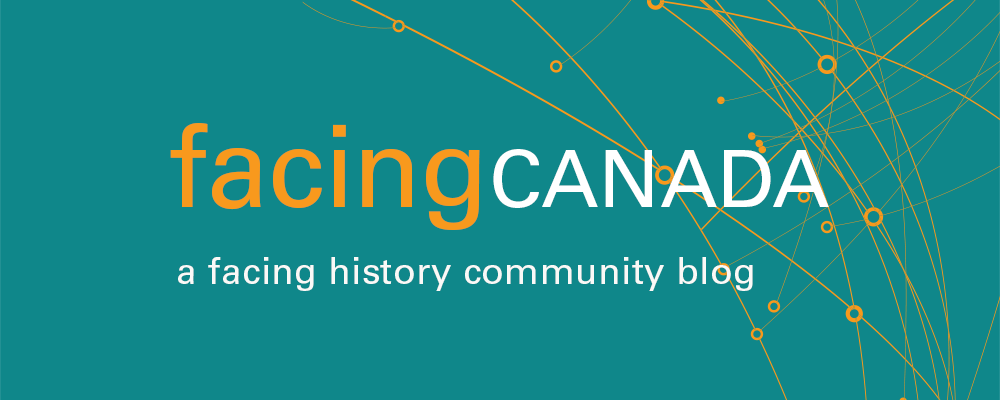Culturally Responsive and Relevant Pedagogy [CRRP]
In “Culturally Relevant Pedagogy: Ingredients for Critical Teacher Reflection,” Tyrone Howard suggests that the pedagogical strategies of our predecessors “have failed miserably when it comes to educating students from culturally diverse and low-income backgrounds,” (201). Howard, thus, argues teachers [especially of urban schools] must learn to construct “pedagogical practices that have relevance and meaning to our students’ social and cultural realities,” (195). That is to say that we must work with and build upon the knowledge base our students bring to the classroom as opposed to the expectation that all students should already be prepared for and predisposed to a “Hidden Curriculum” with a Eurocentric bias (Ghosh, 27-8).
Howard further states that CRRP is the result of critical reflection process: “a personal and challenging look at one’s identity as an individual person and as an active professional,” (201). Howard does note, though, that “teachers must be careful to not allow racial classifications of students to be used as rigid and reductive cultural characteristics,” (201).
Challenge – Deficit Thinking
I have been a teacher for eight years. In that time I have had relatively limited breadth of experiences. Before I came to the Toronto District School Board, I worked with the Bluewater District School Board in small relatively homogenous schools in small towns centred around Owen Sound. I have spent the last seven years in an alternative school in the heart of Scarborough working with many of the most disengaged students the board has produced. Here I have dealt with a very diverse (culturally, religiously, ability, etc) group of students. While the two experiences differ significantly on the surface, in reality they share a lot of similarities.
In the small towns the schools were anything but diverse. That said, while there I taught mostly locally developed and essential curriculum. This meant that though the school population was probably 80% (or more) white, with the majority of the rest being aboriginal students bussed in from the local reserve, in my classroom, around fifty percent of the students were native (and pretty much the rest of the kids, though ‘white’, would be often described as the type of white not lacking in pejorative euphemisms). In both environments, student success rates are low and negative behavioural incidences high.
In these environments it is very easy to engage in deficit thinking. According to Lois Weiner, deficit thinking is the presumption that negative behaviours and low success rates are inherent to the students’ social background (42). Given the correlation, it becomes an easy assumption to make. And unfortunately, though easy is easy, it is not entirely accurate.
Change – Critical Reflection
As a novice teacher in Wiarton, I had an experience that changed my perception of race. I worked part of my day in the resource-withdrawal room into which students would sometimes wander from their regular classes. The room had two laptops, one for identified (IEP/IPRC) students, and one reserved for students from the local band. One day a red-headed and freckled student came in and started using the band computer. I, without thinking, quickly told him he was using the wrong computer. Kindly and quietly, the veteran TA in the room with me pulled me aside and explained that the student was a member of the band and had every right to use the computer. I was quite embarrassed and must have turned an even redder hue than I normally adorn. I had made a pretty quick presumption about a student’s heritage based on a deep reservoir of stereotypes to which I had held. Through my shame, it became clear that these stereotypes would no longer serve me. That is to say, in North America, a great part of our Native population is what we might label as hidden. There is no easy way to identify another’s heritage, and it is not for us to do so.
Later, while working in my current position, a friend introduced me to an article by Malcolm Gladwell, "Black Like Them.” Here Gladwell addresses quite adeptly the difficulty in racial and cultural designators. He notes that the concepts of race can vary widely even within one [perceived version of a] community: he notes concepts of ‘blackness’ vary widely between Black Americans and West-Indians (1-2). Gladwell notes the danger of reductionist views of culture and race, and argues that these have led to new forms of racism in the United States and Canada. He concludes that the interplay between individual and social conceptions of self both play a paramount role in individual success. This should underscore for us the need to move beyond our most simplistic views of culture (those, which of course, encourage deficit thinking).
Success – Individual and Society
A couple years ago I attended Facing History’s week-long Holocaust and Human Behaviour seminar. I hoped to gain more hands-on material for the History classroom (in particularly the locally developed Genocide course). While I entered the seminar with a basic understanding of equity issues, especially as reflective practice, through Facing History I found a new lens through which to address equity and gained a wealth of resources to explicitly teach it in the classroom.
In Facing History’s Scope and Sequence, the ‘Journey’ begins with addressing the aforementioned concepts of identity:
The Individual and Society is the introductory section of the Facing History Scope and Sequence. The focus for the section is on how both individual and national identities are formed, as well as how these identities influence behavior and decision-making.
Through the application of identity charts (see: Identity Charts, Iceberg Charts, or “The Bear that Wasn’t”) we give students the chance to consider their own identities, and we give ourselves an insight into how students’ see themselves. These activities allow us to discuss issues such as those addressed in “Black Like Them”, and, further, for us to begin to understand what cultural knowledge our students bring into the classroom.
In my classroom I have consistently received positive feedback from students in the use of identity charts like the ones from Holocaust and Human Behaviour – ‘The Bear that Wasn’t’ (2-8). I model the identity chart on the board (one of myself). The students seem to enjoy helping me with that, and the lens through which students see me [and others] quickly becomes apparent. Then the students read an excerpt from the story “The Bear That Wasn’t” and complete an identity chart for themselves and one for the bear, which they will compare. While students sometimes have trouble creating the identity chart for the bear (that empathetic skill set sometimes needs building) they enjoy creating and sharing their own. In fact, my students seem to enjoy noting what makes them unique more so than finding areas of commonality (but that could be a curiosity of my school).
Of note, in terms of social structures, while my students often see age, gender, and race, they rarely think about religion or first language even after significant prompting. This makes an easy discussion point around values and also of which is more problematic – the social constructs we see and name, or those we do not.
From Reflection to Participation
In our pursuit of Culturally Relevant and Responsive Pedagogy, it should be our aim to best serve the needs of our students. In ‘Urban Schools’ this means servicing a diverse multicultural group. If we follow James Banks’ [“one of the leading school scholars in the field of multicultural education” (Lee, 74)] continuum to Transformative and Social Action approaches to pedagogy we also follow Facing History’s Scope and Sequence.
Banks argues the Transformative approach allows students to understand a variety of ‘ethnic perspectives and points of view’ (75). To this end, Facing History students learn through the ‘We and They’ sequence to understand the various ways nations and people see themselves and others. As noted earlier, it is sometimes difficult for [my] students to empathize with others and place themselves in contexts that are not their own. In completing identity charts early, though, students are more prepared to see how identity can be shaped and perverted by social forces. As I have a prevalent West Indian population in my school (mostly Jamaican and Guyanese), Gladwell’s article “Black Like Them” is usually well received and leads to long discussion about how different cultures see and interpret race (sometimes they run with it to the point that it can be hard to control a degree of focus in the classroom).
Further, Banks suggest we must arrive with our students at Social Action, which he defines as adding to the Transformative approach by having students “make decisions and take actions related to the concept, issue, or problem they have studied,” (75). Likewise, Facing History’s journey culminates at ‘Choosing to Participate’, where students “begin to understand that they also have the power to change the course of history through their own individual actions."
Conclusion
If we, as critically self-reflective educators, hope to best serve our urban students, we must learn to address their individual needs and work to build upon their prior [cultural] knowledge. This means we must always reflect on our practice, consistently engage in questions of identity (both our own and that of our students’) and how these interact with society. And, ultimately, we should aim to move these practices to the achievement of higher order thinking as exemplified in transformative and action driven pedagogy. In all of this, Facing History and Ourselves is a perfect complement with a wealth of resources to guide us.
If you have any thoughts, practices, reflections, etc., from your experiences to add to this thread, please share.
Works Cited
Banks, James. “Approaches to Multicultural Curriculum Reform.” In Lee, E., Menkart, D., Okazawa-Rey, M. (Eds.) Beyond Heroes and Holidays. Washington: Teaching for Change, 2006.
Holocaust and Human Behaviour. Facing History and Ourselves National Foundation, 1994.
Ghosh. Ratna. “Racism: A Hidden Curiculum.” Education Canada, 2008; 48 (4).
Gladwell, Malcolm. “Black Like Them.” The New Yorker, Apr 29, 1996.
Howard, Tyrone. “Culturally Relevant Pedagogy: Ingredients for Critical Teacher Reflection.” Theory into Practice, Summer 2003; 42 (3).
Weiner, Lois. “Challenging Deficit Thinking.” Educational Leadership, 2006.

